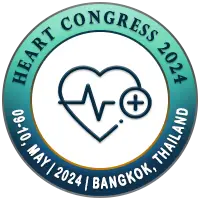
Jannatul Ferdous
Directorate General of Health Services, BangladeshTitle: Prevalence and Management of Post Cesarean Section Hypertensive Emergencies in Bangladesh
Abstract
Hypertensive emergencies following cesarean sections pose significant risks to both mothers and infants, yet data on this complication remain limited, particularly in resource-constrained settings such as Bangladesh. This retrospective study aimed to assess the prevalence and management outcomes of post-cesarean section hypertensive emergencies in a tertiary care hospital in Bangladesh.
A total of 532 cesarean sections were performed over a one-year period, among which 38 cases (7.1%) were complicated by hypertensive emergencies. The majority of these cases occurred in women with pre-existing hypertension (65.8%), while a notable proportion developed de novo hypertension post-operatively (34.2%). The mean age of affected mothers was 29.4 years, with a range from 20 to 40 years.
Regarding management, prompt intervention was crucial in mitigating adverse outcomes. Immediate pharmacological therapy, primarily comprising intravenous antihypertensive agents such as labetalol and hydralazine, was initiated in all cases. Additionally, magnesium sulfate infusion was administered to prevent eclampsia in high-risk patients. Close monitoring of vital signs, fluid balance, and fetal well-being was maintained throughout the postoperative period.
Notably, despite aggressive management strategies, maternal and fetal complications were observed in a subset of cases. Maternal complications included pulmonary edema (5.3%), acute kidney injury (2.6%), and cerebrovascular accidents (1.3%). Adverse fetal outcomes, such as intrauterine growth restriction (7.9%) and neonatal intensive care unit admissions (10.5%), underscored the gravity of this complication.
So, post-cesarean section hypertensive emergencies represent a notable concern in Bangladesh, particularly among women with pre-existing hypertension. Timely recognition and aggressive management strategies are imperative to mitigate maternal and fetal morbidity and mortality. Further research is warranted to elucidate risk factors and optimize preventive measures in this vulnerable population.
Biography
To be updated

